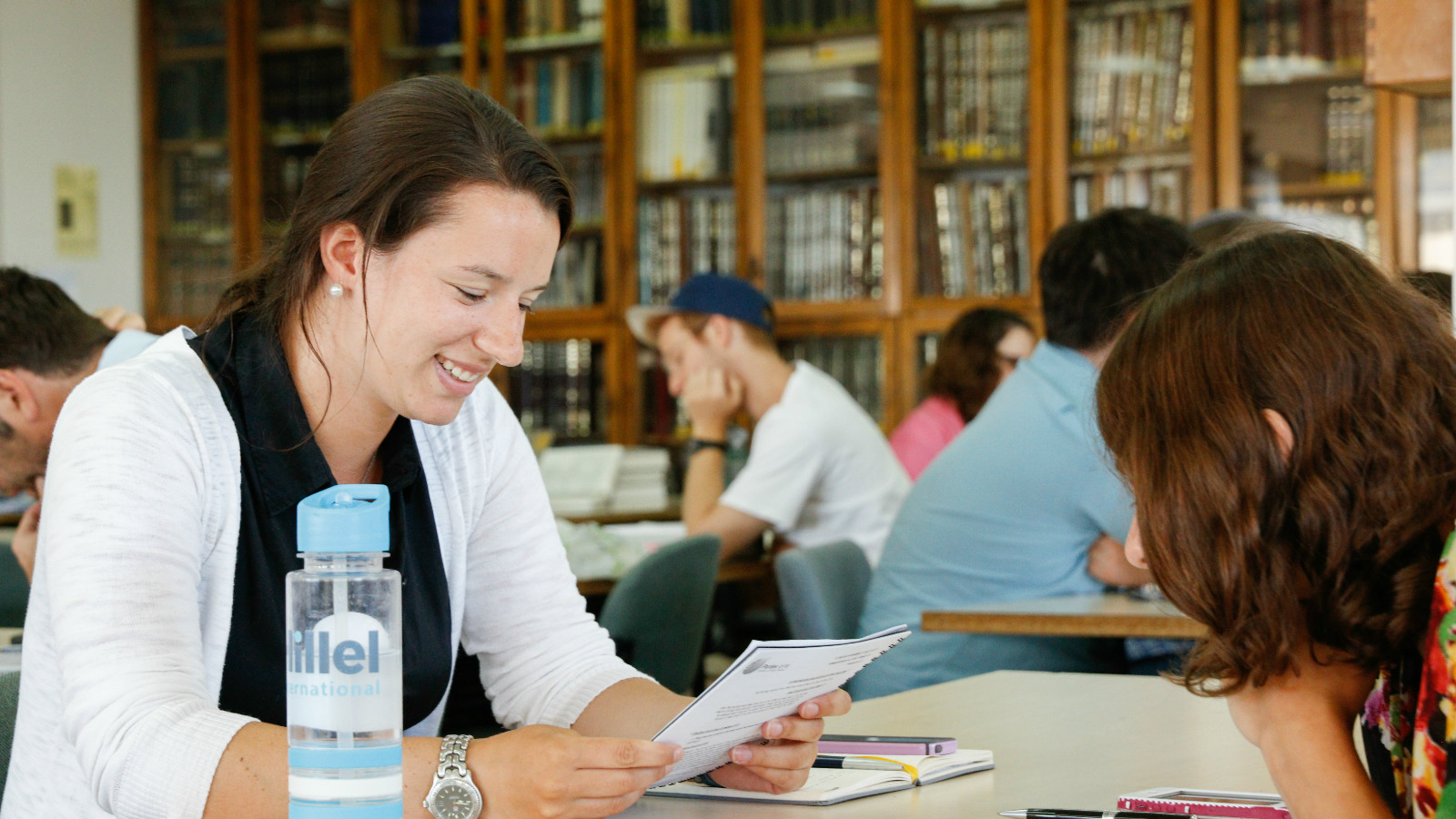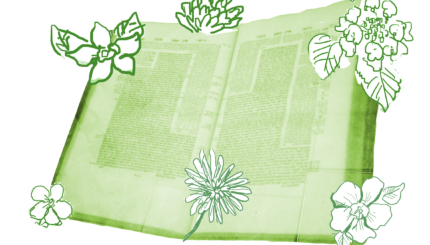Ask the average Jew where to learn about Jewish law, and you’ll probably be sent to the Bible or Talmud. Once there, you may find yourself a bit confused. The Bible includes many laws, but generally offers little explanation of the details of observance; the Talmud, on the other hand, includes an excess of detail, but also incorporates multiple viewpoints, stories, and digressions.
A person wondering, for example, how to light a Hanukkah menorah, what activities are permitted on Shabbat, or what one may eat during Passover, will have to weed through pages of discussion in order to find answers, and those may not be straightforward at all.
Given the Talmud’s complexity, scholars since the medieval period have attempted to codify Jewish law in an easily accessible format. In the 12th century, Moses Maimonides (Rambam) composed the Mishneh Torah, a summary of laws relating to all areas of Jewish life. This work, written in simple Hebrew, is meant to be accessible for the average Jew who does not have the skills or motivation to access Talmud.
A century later, Jacob ben Asher produced the Arba’ah Turim (often called the Tur for short), a code that addresses only the practical areas of Jewish law. Unlike Maimonides, Jacob ben Asher restricted his discussion to laws relevant to post-Temple Jewish life, and cited his sources, referencing different opinions when necessary.
The Shulchan Aruch’s Beginnings
On the heels of the Tur, the next influential Jewish code of law was the Shulchan Aruch (literally, the “set table”), written by Joseph Caro (1488-1575). Caro was part of a Sephardic family that was expelled from Spain in 1492. After the death of his father, Caro was adopted by his uncle, Isaac Caro, the author of a commentary on the Bible. The Caro family eventually settled in Safed, the area of northern Israel where the mystical circle of Isaac Luria then flourished. Both Isaac and Joseph Caro became part of this community of mystics.
Joseph Caro originally set out to write a commentary on the Arba’ah Turim that would cite sources not mentioned by Jacob ben Asher and that would often differ from the Tur’s conclusions. This commentary, named the Bet Yosef, reads like a set of footnotes to Jacob ben Asher’s more concise statements of law.
In the introduction to this work, Caro explains that the expulsion of the Jews from Spain and their subsequent dispersion among Ashkenazic communities had caused confusion about the rules of observance. Sephardic Jews often found that their inherited traditions differed from those of the Ashkenazi Jews into whose communities they had moved; with the dismantling of Sephardic communities, it was no longer clear who had authority to decide matters of law. By presenting all known sources on particular issues, Caro hoped to clear up this confusion.
The Bet Yosef eventually became the notes for the Shulchan Aruch, which would become Caro’s most famous and influential work. Originally intended as a crutch for those not sufficiently learned to read the Bet Yosef or the halachic works referenced there, the Shulchan Aruch soon became the most important code of Jewish law.
Format of the Shulchan Aruch
Caro divided his work according to the categories introduced by Jacob ben Asher. Like the Arba’ah Turim, the Shulchan Aruch is divided into four sections:
Orah Hayim (laws relating to prayer, Shabbat and holiday observance, and other rituals of everyday life),
Yoreh De’ah (laws of kashrut, tzedakah, conversion, and other ritual matters),
Even ha’Ezer (laws relating to women and marriage), and
Hoshen Mishpat (civil law, including sections on lending money, renting and buying homes, and worker-employer relations).
Within each of these four sections, laws on similar subjects are grouped together. Each section is divided into simanim (paragraphs), and those are further divided into se’ifim (sub-sections). A citation of the Shulchan Aruch, thus, might read: Hoshen Mishpat 335:1, meaning: section Hoshen Mishpat, siman 335, se’if 1.
In general, the Shulchan Aruch presents laws in a straightforward way, with virtually no discussion. For example, Caro’s instructions for lighting Hanukkah candles read:
How many candles should one light? On the first night, one lights one; from then on, one adds one each night until there are eight on the last night (Orah Hayim 671:2).
Although the Talmud and other earlier texts include other traditions for the appropriate means of lighting Hanukkah candles, Caro chose to present only what he considered to be the correct procedure, in order to avoid confusing his readers.
Caro and Mysticism
It may seem strange that Caro was simultaneously a mystic and the most important codifier of Jewish law. We tend to associate mystics with meditative practice and with an emphasis on achieving visions of the divine. When we imagine a medieval legal scholar, we might conjure up an image of a very serious man who spends his days bent over a set of musty books. However, within the context of the mystical circle of Safed, Caro’s double identity makes sense.
For Isaac Luria and his school, the goal of religious observance was to reunite the parts of the divine being that had been scattered as a result of human disobedience. This process, known as tikkun (fixing), required — first and foremost — the practice of mitzvot. Luria and his followers believed that the performance of each mitzvah helped in some way to unify the various aspects of God. The composition of a compendium of Jewish law would thus help Jews to participate in this tikkun.
For the most part, Caro’s mystical leanings have little effect on his legal decisions. In some instances, however, Caro does explain a particular law with reference to a mystical teaching.
Commentaries on the Shulchan Aruch
When Caro published the Bet Yosef, Rabbi Moshe Isserles (known as the Rema), an Ashkenazi legal scholar, responded with his own commentary on the Arba’ah Turim, called Darkhei Moshe. Learning that Caro was about to issue the Shulchan Aruch, Isserles abandoned this project and instead wrote a commentary on Caro’s work.
Isserles criticized Caro for often ignoring the opinions of Ashkenazic scholars, commenting that, “Caro’s books are full of decisions that do not follow the interpretations of the sages from whose waters we drink …[the sages] whose children’s children we are.”
It has become a familiar joke that every time a person claims to have the last word on Judaism, multiple commentators appear to challenge this assertion. Famously, Maimonides had the chutzpah to claim that a person could read the written Torah and then the Mishneh Torah and “from them, know the oral Torah and have no need to read another book.” Not surprisingly, Maimonides’ code did not become the last word in Jewish law, but rather almost immediately became the subject of numerous commentaries and critiques.
Similarly, the Shulchan Aruch did not immediately achieve widespread acceptance. Many scholars thought publishing a comprehensive code of law was forbidden, fearing that readers of such a code would have no way of knowing the history or range of opinions on various laws.
Rabbi Shlomo ben Yechiel Luria (the Maharshal), a contemporary of Caro’s, was the author of Yam shel Shlomo, a commentary on part of the Talmud. In the introduction to that work, the Maharshal declared the impossibility of “explain[ing] every uncertainty in the Torah to the point that there is no disagreement.” Rather, he argued, each scholar should delve into the sources, add new interpretations, and decide among various opinions.
Ironically, the Shulchan Aruch ultimately gained its legitimacy through the publication of two major commentaries by 17th-century Ashkenazic scholars. These works, known as Turei Zahav (“Taz”) and Siftei Kohen (“Shakh”) and written by David ben Shmuel haLevi (Poland, 1586-1667) and Shabbetai ben Meir haKohen (Lithuania, 1621-1662), respectively, respond to the critiques of the Shulchan Aruch by explaining Caro’s reasoning, introducing alternative opinions, and offering their own conclusions.
In treating the Shulchan Aruch as an independent work worthy of a commentary of its own, rather than as the poor cousin of the more extensive Bet Yosef, these two scholars secured the place of the Shulchan Aruch as the authoritative code for generations to come.
The best-known later commentary on the Shulchan Aruch is the 19th-century Mishneh B’rurah, written by Yisrael Meir Kogan, which includes explanations and a collection of later opinions on the Orah Hayim section of the code. The 19th century also saw a number of attempts to abridge the Shulchan Aruch. The most famous of these is Shlomo Ganzfried’s Kitzur Shulchan Aruch, which summarizes Caro’s work while also incorporating some alternative opinions and contemporary customs.
Influence of the Shulchan Aruch
To this day, the Shulchan Aruch remains the most influential code of Jewish law. Contemporary legal scholars may, on occasion, disagree with Caro’s conclusions, but they cannot ignore him. The proliferation of commentaries on the Shulchan Aruch has only solidified its central position in the canon. Almost 500 years after Caro produced a work intended primarily for those unable to study more complex legal works, his code has become the primary textbook for most traditional Jewish schools and yeshivas.
Ashkenazi
Pronounced: AHSH-ken-AH-zee, Origin: Hebrew, Jews of Central and Eastern European origin.
chutzpah
Pronounced: KHOOTZ-pah, Origin: Yiddish, nerve, brazenness, presumption, extreme confidence.
Hanukkah
Pronounced: KHAH-nuh-kah, also ha-new-KAH, an eight-day festival commemorating the Maccabees’ victory over the Greeks and subsequent rededication of the temple. Falls in the Hebrew month of Kislev, which usually corresponds with December.
mitzvah
Pronounced: MITZ-vuh or meetz-VAH, Origin: Hebrew, commandment, also used to mean good deed.
Sephardic
Pronounced: seh-FAR-dik, Origin: Hebrew, describing Jews descending from the Jews of Spain.
Shabbat
Pronounced: shuh-BAHT or shah-BAHT, Origin: Hebrew, the Sabbath, from sundown Friday to sundown Saturday.
Talmud
Pronounced: TALL-mud, Origin: Hebrew, the set of teachings and commentaries on the Torah that form the basis for Jewish law. Comprised of the Mishnah and the Gemara, it contains the opinions of thousands of rabbis from different periods in Jewish history.
Torah
Pronunced: TORE-uh, Origin: Hebrew, the Five Books of Moses.
halacha
Pronounced: hah-lah-KHAH or huh-LUKH-uh, Origin: Hebrew, Jewish law.



